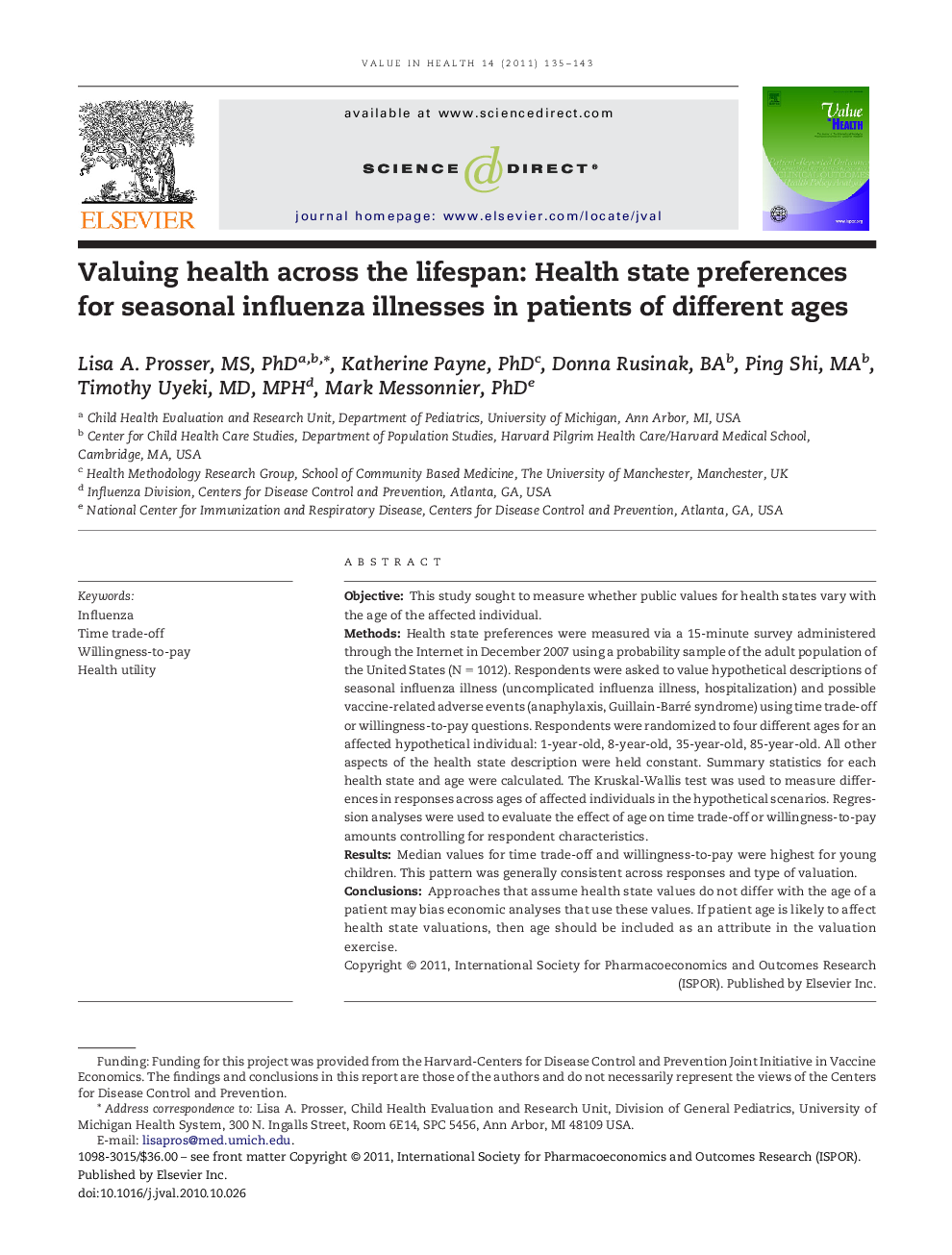| Article ID | Journal | Published Year | Pages | File Type |
|---|---|---|---|---|
| 991425 | Value in Health | 2011 | 9 Pages |
ObjectiveThis study sought to measure whether public values for health states vary with the age of the affected individual.MethodsHealth state preferences were measured via a 15-minute survey administered through the Internet in December 2007 using a probability sample of the adult population of the United States (N = 1012). Respondents were asked to value hypothetical descriptions of seasonal influenza illness (uncomplicated influenza illness, hospitalization) and possible vaccine-related adverse events (anaphylaxis, Guillain-Barré syndrome) using time trade-off or willingness-to-pay questions. Respondents were randomized to four different ages for an affected hypothetical individual: 1-year-old, 8-year-old, 35-year-old, 85-year-old. All other aspects of the health state description were held constant. Summary statistics for each health state and age were calculated. The Kruskal-Wallis test was used to measure differences in responses across ages of affected individuals in the hypothetical scenarios. Regression analyses were used to evaluate the effect of age on time trade-off or willingness-to-pay amounts controlling for respondent characteristics.ResultsMedian values for time trade-off and willingness-to-pay were highest for young children. This pattern was generally consistent across responses and type of valuation.ConclusionsApproaches that assume health state values do not differ with the age of a patient may bias economic analyses that use these values. If patient age is likely to affect health state valuations, then age should be included as an attribute in the valuation exercise.
